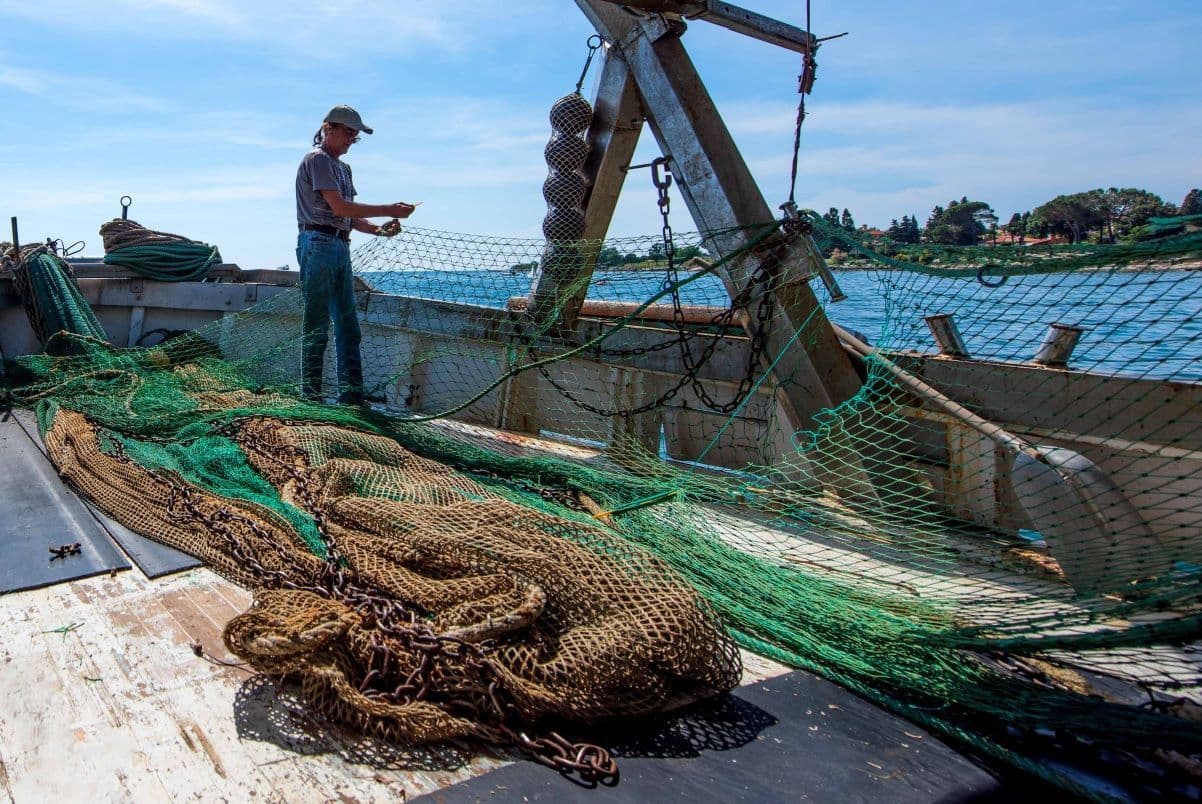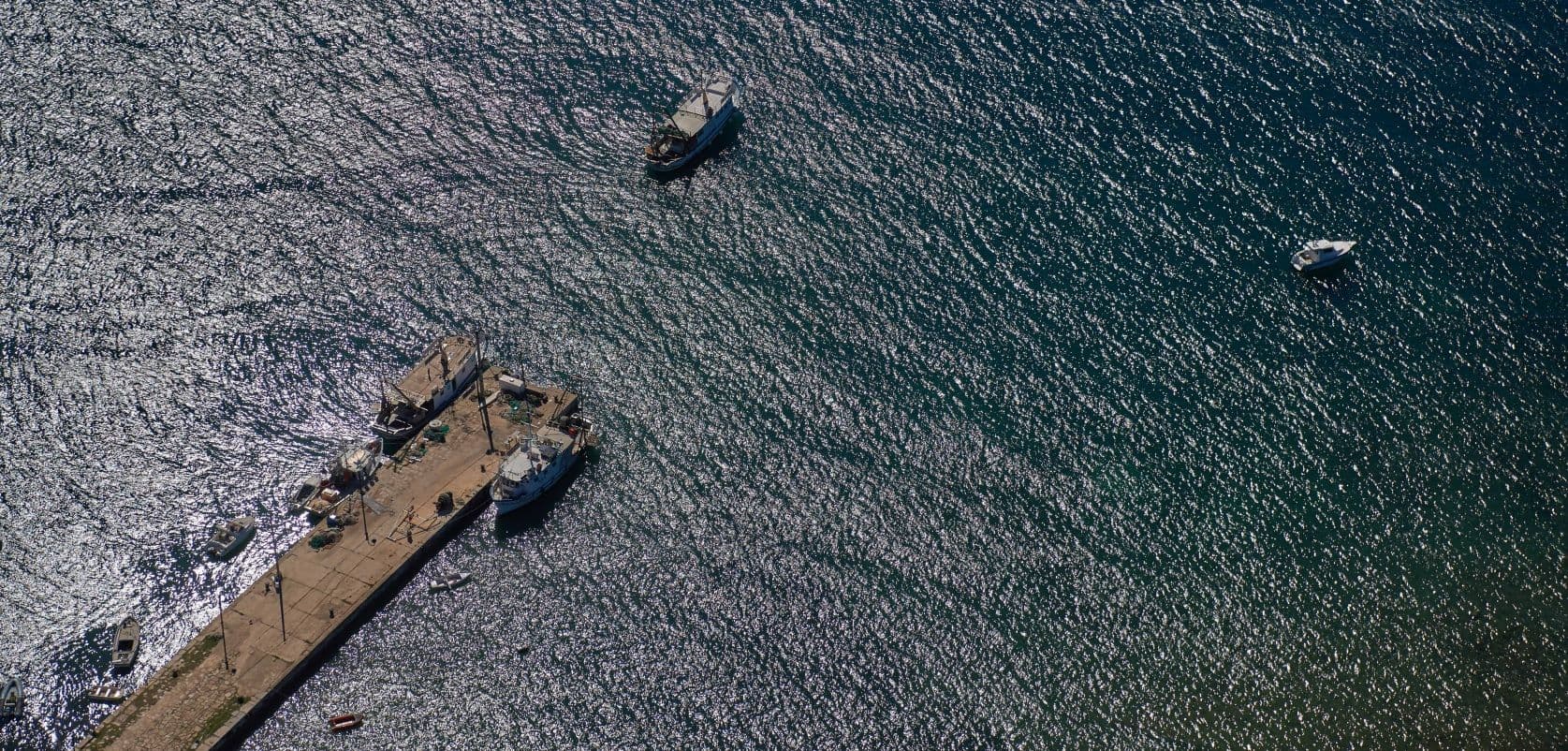








How to catch squid
Walking along the coast these days, you might spot a distant light on a boats shining into the sea cold from Bura (northern wind on the Adriatic). You're watching traditional squid fishing. Fishers bait the hooks, chuck them overboard and let them sink to the bottom, then pull them, yanking the line to make the bait seem alive. If the squid "bites", they pull them up quickly, or they'll end up with nothing more than a squirt of ink, maybe a spare tentacle as the squid sinks back into the dark.

Cook them fresh like fishermen
If you manage to catch a squid yourself, you can prepare them there and then, grilled or pan-fried, without cleaning the innards. Locals call it doing it the dirty way (u šporko, as the locals say). Then again, you might want to experiment with stuffing, make a delicious risotto with a drop of prošek (sweet, fortified wine, like Port), or just baked them in the oven - squid will always be soft, succulent and a gorgeous meal.
Squid is eaten all over the world
Squid is a popular dish all over the world, from hell hot Sichuan dishes, all the way to Mexico, India, even California. In Croatia, they are usually eaten fried on a Friday (It's a Christian thing). The tastiest pieces are caught the old way, with the hook, bait and a piece of lead on a line - peškafondo (from Italian: fishing the bottom). Nice Adriatic squid can weight over a pound, feeding two at the very least. If you manage to find them, enjoy them with respect, as they are Poseidon's favorite pet.

What came first, squid or calamari
The name used in these parts is Lignja (pronounced almost as leeg-nia, but not quite) comes from Latin Lolligne or Loligo, that got distorted over the ages. The other name, Calamari, is known since forever on the whole of the Mediterranean, where squads of these cephalosporins roam hunting for small fish.
From October to February
The squid season is October until February, while the sea is cold, and the meat is soft, succulent. Then again, if someone offers a nice squid out of season, go for it. These are usually caught with nets, as the squids migrate to deeper, colder water in the summer. Even if they were not caught that day, squids are excellent - they freeze well and lose nothing of their flavour.
How to clean a squid
If you have never prepared a squid, don't worry, cleaning them is simple. Just grab her head right below the eyes with one hand and body in the other, and pull them apart (in old clothes, mind you, so that you don't get stained by the ink). You can use a knife if you prefer. Get rid of the eyes and the beak, put keep the tentacles. Wash out the innards, as they might be full of sand. Don't be surprised if you find an entire sardine in it - they are predators. Cut off the tentacles; they can be breaded and fried or used in all kinds of stuffing. Here's a quick one: chop up the tentacles, fry them on a bit of olive oil, throw in some bread crumbs, parsley and garlic, mix well and you got your stuffing. Stuff the squids, then cook them in tomato sauce or bake over a tray of potatoes. Yum.
Which wine goes with squid
If you're eating them dirty, straight from the sea into the pan, go for red. If you decide to have someone cook them for you, there's plenty of taverns nearby that will serve you perfect squid dishes. Delicate and slightly sweet taste of squids pairs well with whites or rose wines. Thank the Poseidon before you tuck in.



Destinations
Additional Information


©2026 Colours of Istria. All rights reserved. No part of this site may be reproduced without our written permission.

















.jpg&w=3840&q=75)






